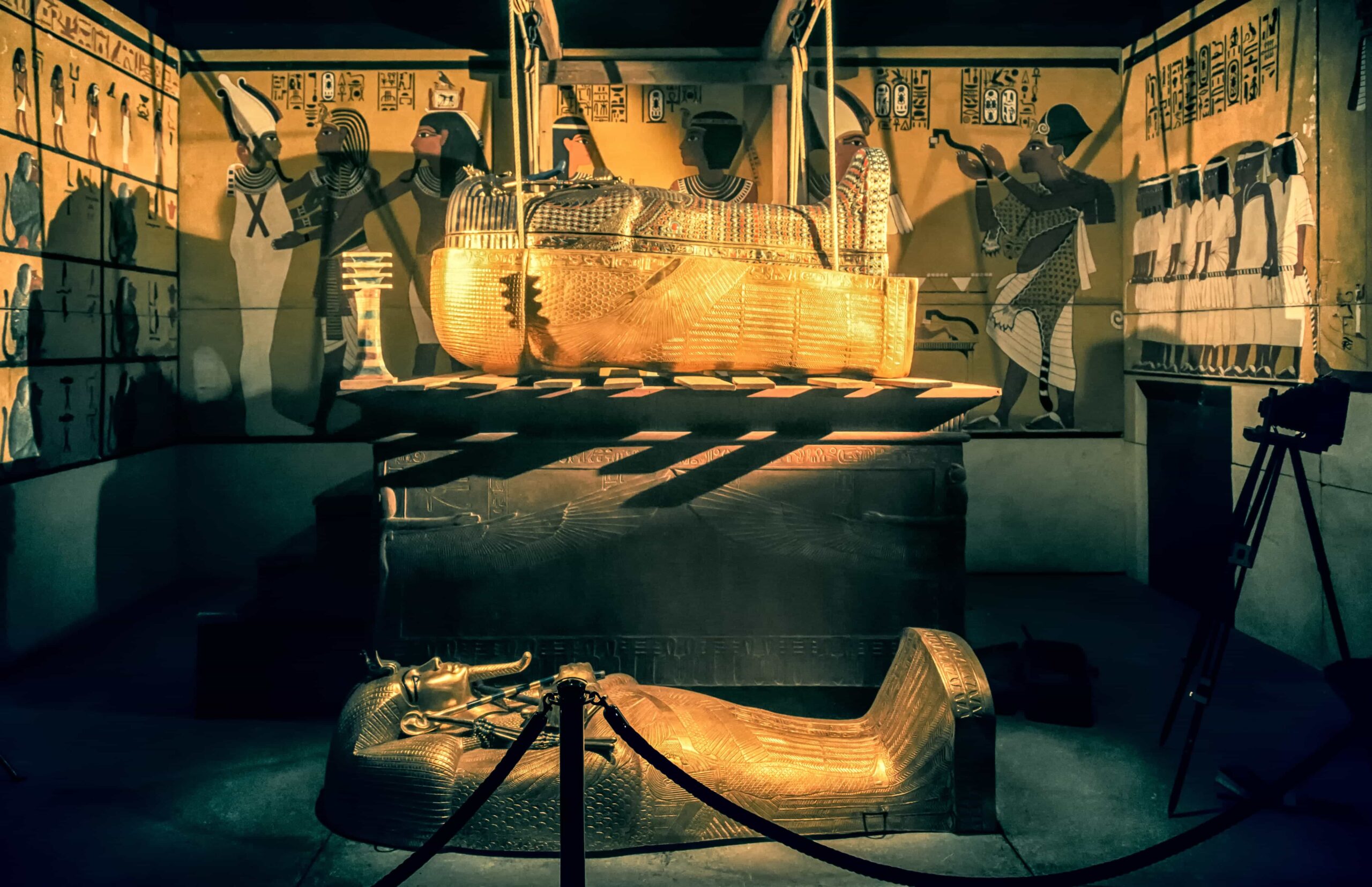
One hundred years ago, Howard Carter made a discovery that enthralled the world; the uncovering of the priceless treasures in the tomb of King Tutankhamun.
The discovery of Tutankhamun’s tomb was quite simply one of the richest and most important archaeological discoveries of all time, but who actually was he? In this blog, we look back at the history and discovery of Tutankhamun.
The History of Tutankhamun
Tutankhamun was born during ancient Egypt’s eighteenth Dynasty, becoming pharaoh from approximately 1332 to 1323 BC, and being the last of his royal family to rule. His father, who is believed to be King Amenhotep IV (Akhenaten), ruled for around seventeen years before suddenly passing away, meaning that Tutankhamun ascended to the throne at just nine years old. In 2010, it was identified through DNA testing that Tutankhamun’s mother was his father’s sister, as an unknown mummy known as ‘The Younger Lady’ was found in tomb KV35 in the Valley of the Kings.
Shortly after becoming king, Tutankhamun married Akhenaten’s third daughter, Ankhesenamun, who was the eldest surviving princess of the royal family. Although it is not believed that the couple had any surviving children, there were two mummified fetuses found in the king’s tomb who were likely to be their stillborn daughters. As Tutankhamun was still young during his time of accession, Akhenaten’s previous officials, Ay and Horemheb, served as his main advisors, having maintained strong ties with the royal family.
Having reigned for only around nine years, King Tutankhamun died unexpectedly, with scientists believing that this was a result of malaria and degenerative bone disease. The boy king was disabled with a deformity of his left foot, meaning that he needed a cane to help him walk. Several of these canes were found in his tomb. King Tutankhamun died without designating an heir, therefore, he was succeeded by Ay. The boy king’s physical challenges and short reign would have certainly seen him as an insignificant pharaoh, had it not been for the remarkable discovery of his astonishing, almost intact tomb.
The Discovery of Tutankhamun’s tomb
Funded by Lord Carnarvon, British archaeologist Howard Carter began the search for the missing tomb of Tutankhamun in 1915. Nearly eight years later, on 4th November 1922, Carter finally uncovered the stone steps leading down to the burial chambers in the Valley of the Kings, Luxor, during what he thought would be his last season of excavation. Over the following weeks, more excavations took place, and the treasures were revealed. On the 27th November, Carter made a small opening through a sealed doorway and peered into a dark chamber. “Can you see anything?” urged Carnarvon. “Yes…” replied Carter. “Wonderful things.”
Within the chamber lay an astonishing array of artefacts, including two life-size statues of Tutankhamun, a gilded and inlaid throne, jewellery, weaponry and foodstuffs for the afterlife. Excavations continued, unveiling more chambers, one in which housed Tutankhamun’s mummy in a gold coffin upon which rested the death mask of the young Pharaoh, the most famous of all Tutankhamun’s treasures. A true wonder of ancient Egyptian craftsmanship weighing around 10kg, it was beaten from sheet gold and inlaid with semi-precious stones and coloured glass.
Reporters and photographers from around the world flooded into Egypt to cover this incredible discovery, and the fact that Tutankhamun was a boy-king increased this media frenzy. On 30th November 1922, The Times newspaper reported it as “the most sensational Egyptological discovery of the century”. Radio, mass-circulation newspapers and moving film quickly shared the news of Carter’s wonderful discovery and ‘Egyptomania’ spread around the world like wildfire.
Egyptian motifs appeared on clothes, jewellery, fabrics, furniture and in architecture. Graceful hieroglyphic symbols, such as the phoenix wings, were woven into the Art Deco style and figures such as the goddess Isis inspired Cleopatra-style bob haircuts and shift dresses. Even today, a whole century after the discovery was made, the name ‘Tutankhamun’ is still associated with the riches of ancient Egypt, and Howard Carter must rank as the most famous archaeologist of all time.
To celebrate the 100th anniversary of the discovery of Tutankhamun’s tomb, we have released a remarkable world-first series of sovereign coins, which you can purchase HERE.


